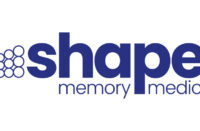MARLBOROUGH, Mass., May 7, 2018 /PRNewswire/ — CardioFocus, Inc. today announced that the U.S. Food and Drug Administration (FDA) has granted approval for the HeartLight Excalibur Balloon, a next-generation technology designed for the treatment of paroxysmal atrial fibrillation (PAF)*.
The Excalibur Balloon leverages the proven universal balloon design of the company’s FDA-approved HeartLight® Endoscopic Ablation System and introduces an advanced feature set that optimizes the speed and magnitude of target tissue contact during pulmonary vein isolation (PVI) procedures.
More than 2.3 million people in the U.S. suffer from atrial fibrillation (AF), and the numbers are climbing along with the aging population.1 By 2050, AF is expected to affect 15.9 million people.2
“We have seen encouraging results with the Excalibur Balloon. It obtains an impressive antral position and establishes even more tissue contact, which enables contiguous lesion sets,” said Vivek Y. Reddy, MD, Director of Cardiac Electrophysiology and Helmsley Trust Professor of Medicine at The Icahn School of Medicine at Mount Sinai. “This is a clear advance in the field of balloon-based AF ablation, delivering on the promise of an ultra-compliant balloon.”
In addition to its ultra-compliant design that enables adaptive vein conformance, the Excalibur Balloon also incorporates proprietary Dynamic Response™ technology. This feature allows the user to make real-time adjustments to balloon size, allowing for optimal tissue contact. These combined features are designed to maximize the engagement of the balloon with the pulmonary veins, while decreasing the time required to complete ablation procedures.
“The FDA approval of the Excalibur Balloon is a significant milestone for CardioFocus, as it is the first ultra-compliant balloon introduced into the US market for AF ablation,” said Burke T. Barrett, Chief Operating Officer of CardioFocus. “The Excalibur Balloon capitalizes on the existing features of our HeartLight System, which offer an accurate, consistent, and controlled treatment option for PAF patients whose atrial arrhythmias are insufficiently controlled with medication*.”
CardioFocus has successfully launched the Excalibur Balloon in Europe following CE Mark approval in September 2017. The technology is now offered at 20 European centers. The company expects to begin a full commercial launch of the Excalibur Balloon in the U.S. in the third quarter of 2018.
*CAUTION: Federal Law (USA) restricts this device to sale by or on the order of a physician. The HeartLight Endoscopic Ablation System is indicated for the treatment of drug refractory recurrent symptomatic paroxysmal atrial fibrillation.
About CardioFocus, Inc.
CardioFocus is a medical device innovator and manufacturer dedicated to advancing ablation treatment for cardiac disorders such as atrial fibrillation (AF). The company’s HeartLight Endoscopic Ablation System is commercially approved for use in the United States, Europe, and Japan. The HeartLight System is a revolutionary catheter ablation technology designed for the treatment of atrial fibrillation (AF), the most common heart arrhythmia. The HeartLight System’s direct visualization, titratable laser energy, and universal balloon design make it a new standard for pulmonary vein isolation (PVI) procedures. More than 4,500 patients with AF have been successfully treated with the system. CardioFocus is headquartered in Marlborough, Mass. For more information visit www.cardiofocus.com.
Media Contact:
Helen Winkler
Phone: 949.606.2008
Helen@bentoncommunications.com
1 Go AS, et al. Prevalence of diagnosed atrial fibrillation in adults. JAMA. 2001;285:2370-2375.
2 Miyasaka Y, Barnes ME, Gersh BJ, Cha SS, et al. Secular trends in incidence of atrial fibrillation in Olmsted County, Minnesota, 1980 to 2000, and implications on the projections for future prevalence. Circulation 2006; 114:119–25.
SOURCE CardioFocus, Inc.






